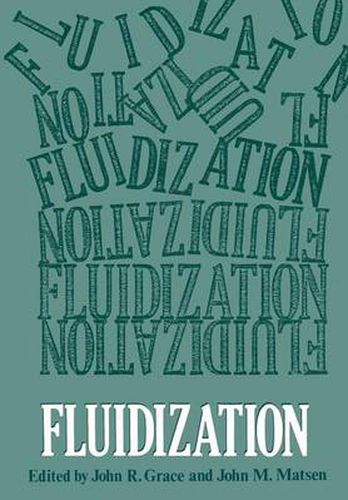Readings Newsletter
Become a Readings Member to make your shopping experience even easier.
Sign in or sign up for free!
You’re not far away from qualifying for FREE standard shipping within Australia
You’ve qualified for FREE standard shipping within Australia
The cart is loading…






This title is printed to order. This book may have been self-published. If so, we cannot guarantee the quality of the content. In the main most books will have gone through the editing process however some may not. We therefore suggest that you be aware of this before ordering this book. If in doubt check either the author or publisher’s details as we are unable to accept any returns unless they are faulty. Please contact us if you have any questions.
Fluidized beds have gained prominence in many process in dustries (including chemicals, petroleum, metallurgy, food and pharmaceuticals) as a means of bringing particulate solids into contact with gases and/or liquids. Many fluidized bed operations are physical in nature (e.g. drying, coating, classification, granulation, and rapid heat transfer as in quenching or annealing). Other operations involve chemical reactions including the cata lytic cracking of hydrocarbons, the manufacture of acry10nitrite and phthalic anhydride, the roasting of metallurgical ores, and the regeneration of spent catalysts. In recent years fluidized beds have been of special interest because of their potential as the central component in new processes for utilizing coal as a source of energy, notably in coal combustion and gasification processes. The fluidized bed offers a number of advantages over most other methods of contacting, in particular high rates of heat transfer, temperature uniformity and solids mobility. Among the disadvantages are particle losses by entrainment, attrition of solids, limited reactor efficiency due to gas bypassing and gas and solids backmixing, and difficulties in design and scale-up due to the complexity of fluidized beds. The International Fluidization Conference held in Henniker, New Hampshire, U.S.A. from 3-8 August 1980 was the fifth inter national congress devoted to the entire field of fluidization.
$9.00 standard shipping within Australia
FREE standard shipping within Australia for orders over $100.00
Express & International shipping calculated at checkout
This title is printed to order. This book may have been self-published. If so, we cannot guarantee the quality of the content. In the main most books will have gone through the editing process however some may not. We therefore suggest that you be aware of this before ordering this book. If in doubt check either the author or publisher’s details as we are unable to accept any returns unless they are faulty. Please contact us if you have any questions.
Fluidized beds have gained prominence in many process in dustries (including chemicals, petroleum, metallurgy, food and pharmaceuticals) as a means of bringing particulate solids into contact with gases and/or liquids. Many fluidized bed operations are physical in nature (e.g. drying, coating, classification, granulation, and rapid heat transfer as in quenching or annealing). Other operations involve chemical reactions including the cata lytic cracking of hydrocarbons, the manufacture of acry10nitrite and phthalic anhydride, the roasting of metallurgical ores, and the regeneration of spent catalysts. In recent years fluidized beds have been of special interest because of their potential as the central component in new processes for utilizing coal as a source of energy, notably in coal combustion and gasification processes. The fluidized bed offers a number of advantages over most other methods of contacting, in particular high rates of heat transfer, temperature uniformity and solids mobility. Among the disadvantages are particle losses by entrainment, attrition of solids, limited reactor efficiency due to gas bypassing and gas and solids backmixing, and difficulties in design and scale-up due to the complexity of fluidized beds. The International Fluidization Conference held in Henniker, New Hampshire, U.S.A. from 3-8 August 1980 was the fifth inter national congress devoted to the entire field of fluidization.